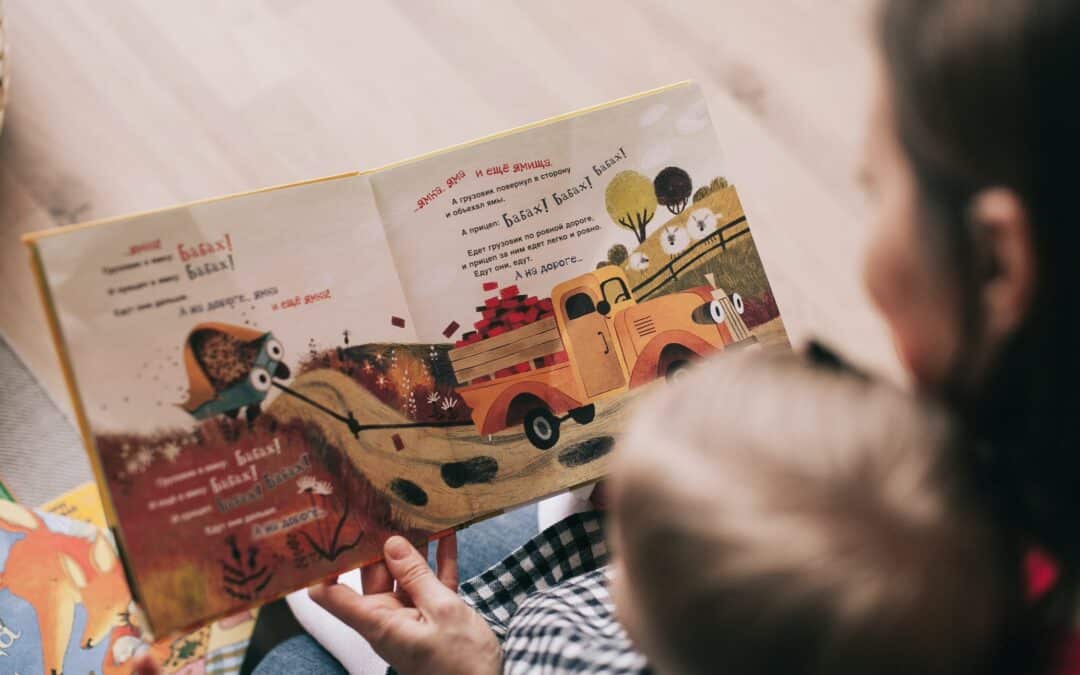Interactive Storybook Reading for Multilingual Children: Techniques and Resources
Do you work with multilingual children? This article is for you. My goal is to offer you practical tools and research-based advice to enrich your interventions and optimize language development in your young clients.
What is Interactive Storybook Reading?
Interactive storybook reading is a method where you do not simply read a book to a child passively. Instead, it involves active interaction between the child and the adult. The idea is to enrich the reading experience by using open-ended questions, comments, extensions, and turn-taking. Visual and tactile supports are also integrated to make the experience more immersive and engaging.
Main Components of Interactive Storybook Reading
- Print Awareness: Understanding the functions, conventions, and forms of print. Learning reading direction, the function of the book’s title, and the differentiation between uppercase and lowercase letters.
- Literary Language: Exposing students to richer and more diverse language. Introducing words and expressions specific to literature that children may not hear in everyday spoken language.
- Inferences from Texts: Encouraging children to make predictions and develop their oral comprehension. Stimulating their ability to make connections between the text and their own experiences.
- Phonological Awareness: Working on non-words and manipulating sounds both orally and in writing. Developing skills such as segmenting words into syllables, identifying initial sounds, and categorizing rhymes.
Techniques Used
Open-Ended Questions
During reading, ask open-ended questions that encourage the child to think and develop their responses. For example, ask “Why do you think the character did that?” or “What do you think will happen next?”
Extensions
If the child responds with a simple sentence, enrich that sentence. For example, if the child says “dog,” you can respond “Yes, it’s a big brown dog running in the park.”
Reiterations
Repeat the child’s responses to reinforce their learning. If the child says, “She is eating an apple,” you can repeat and add, “Yes, she is eating a red and juicy apple.”
Visual and Tactile Supports
Use images, objects, or gestures to illustrate concepts. If the book mentions an apple, show a real apple or an image to make the concept concrete. You can also use many other visual aids like those I have developed for practitioners that are invaluable in my practice to support comprehension.
Why Use It with Multilingual Children?
In the field of speech therapy, and especially with multilingual children, interactive storybook reading offers several advantages:
- Vocabulary Development: Introducing and reinforcing new words in multiple languages.
- Improved Comprehension: Helping children make connections between words and their meanings in various contexts.
- Encouragement to Communicate: Promoting interaction and verbal exchange, which is essential for acquiring new languages.
- Strengthening Narrative Skills: Working on children’s ability to tell stories and organize their ideas coherently.
A Practical Resource for You: 5 Interactive Storybook Readings
For additional stimulation activities, I highly recommend the resource 5 Interactive Storybook Readings. It offers various stimulation activities for young children in kindergarten or early first grade. It’s a simple and easy-to-use resource that will help you stimulate language, print awareness, and phonological awareness in young learners.
With this resource, you can work with:
- I Am Terrible by Elise Gravel
- The Wolf Who Wanted to Change his Color by Orianne Lallemand
- The Wrench by Elise Gravel
- The Cave by Rob Hodgson
- Fafounet Goes Camping by Louise D’aoust
These books are not provided with the material, so you will need to obtain them from the library or a bookstore. This resource is ideal for classroom interventions in kindergarten, first grade, or for individual or small group interventions.
Free Resources and Invitations
To discover more practical strategies and access free resources, be sure to visit my ressources and trainings to keep growing.



